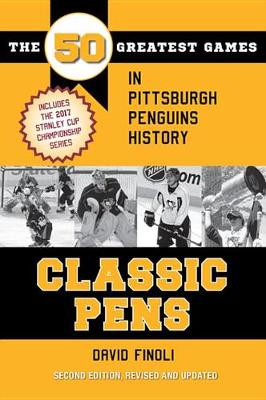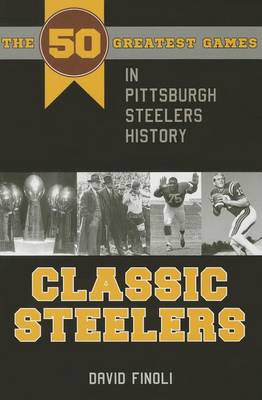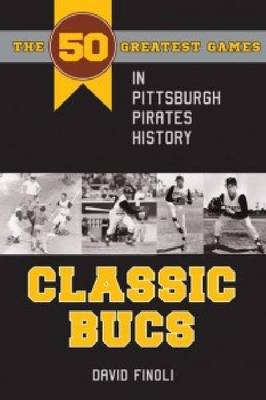Classic Sports
4 total works
The 1983-84 campaign proved to be the season that turned everything around. The Penguins' prize was Mario Lemieux, an 18-year-old center from Montreal, Quebec, who would lift the Pens out of the canyon of last-place finishes to the lofty heights of back to- back Stanley Cup championships in 1991 and 1992. Lemieux went on to become one of the greatest players the game had ever seen. He and teammates such as Jaromir Jagr, Tom Barrasso, Ron Francis, Joe Mullen, Kevin Stevens, Larry Murphy, and Paul Coffey soon made the Civic Arena the place to be.
Though the Penguins' front office tried to keep the star-studded team together, the franchise experienced financial troubles again, leading to threats that the Penguins would be sold and leave town. In 1999 Mario Lemieux, now in his 30s, headed a group that purchased the club. The new ownership began a renaissance in which players like Sidney Crosby, Evgeni Malkin, Marc-Andre Fleury, Kris Letang, and Jordan Staal again made the Pens a powerhouse on the ice, led them to a third Stanley Cup championship in 2009, and secured one of the best new buildings in the NHL: the Consol Energy Center.
In Classic Pens, author David Finoli's tour of the best moments in the Penguins' long history will evoke special memories from long time fans and delight those who currently follow the team.
When it came to football in the 1930s, the college sport was king. But in 1933, former boxer and minor league baseball player Art Rooney, who had quarterbacked the squad at Duquesne University, purchased a team for Pittsburgh for $2,500. Thus began the legacy we know as "Steeler Nation."
At the time, no one could have imagined that the Pirates, as they were originally named, would become a treasured possession for Pittsburghers. For the first 40 years, the franchise was a national joke. With only one playoff performance-a 21-0 defeat at the hands of the Philadelphia Eagles for the eastern division title in 1947-highlights were minimal for a team that regularly found itself at the bottom of the standings.
Then in 1969, Art Rooney's son Dan hired Chuck Noll from the Baltimore Colts to coach his team. Noll replaced undisciplined players with future hall of famers. By 1974 the team won its first world championship and went on to capture four Super Bowl titles in six years. Noll's legacy for excellence continued with four more Super Bowl appearances and two championships in 2005 and 2008, garnering the franchise a league record of six Super Bowl wins.
Classic Steelers includes these six championship tilts and takes citizens of the Steeler Nation on a play-by-play tour of the most memorable games in the team's history. Author David Finoli recounts in vivid detail the thrilling gridiron performances that have made the Steelers so special to their legions of fans.
A countdown of the greatest games of a Steel City institution
When slow-footed former Pirate Sid Bream broke the heart of the "Bucco" nation, it was Game Seven of the 1992 NLCS. He slid across the plate in the bottom of the 9th for the Braves, giving them the pennant with a heart-wrenching 3-2 victory. The run began a mind-numbing slide that enters its third decade of sub .500 performances. The curse of Sid Bream was born.
Until the surprising 2012 campaign, a generation of Steel City baseball fans had hungered for the Pirates to be involved in an actual pennant race, a goal that even the most diehard could not have imagined. There was a time that it wasn't a far-off dream, but instead an annual right. From 1970 through 1979, Pittsburgh won six eastern division crowns and two national championships. While impressive, the 1970s were only the second-best decade in franchise history. Classic Bucs looks back to the beginning of the twentieth century, the indisputable best decade of the Pittsburgh Pirates, when a young and brash team captured four senior circuit titles and their initial World Series in 1909.
During the years between those two memorable seasons, the club won two other world championships in 1925 and 1960, the latter of which culminated in arguably the greatest contest in the history of the game. On a memorable fall afternoon on October 13, 1960, a second baseman known more for his defensive prowess than his bat became the only man in the history of the World Series to end the last game of the fall classic with a home run. The second baseman was Bill Mazeroski, and he smacked a Ralph Terry pitch over the left field wall at Forbes Field to give the Bucs a wild 10-9 victory over the New York Yankees and send the town into hysterics.
Incredible moments like this are the inspirations for this book chronicling the 50 greatest Pirate games of all time. Memories of these games are sure to bring a collective smile to the Pirates Nation. Classic Bucs tells the story of this celebrated old franchise to a new generation of Pirate fans, a generation that has been looking for its own Mazeroski moment ever since Bream slid across home plate three decades ago.



